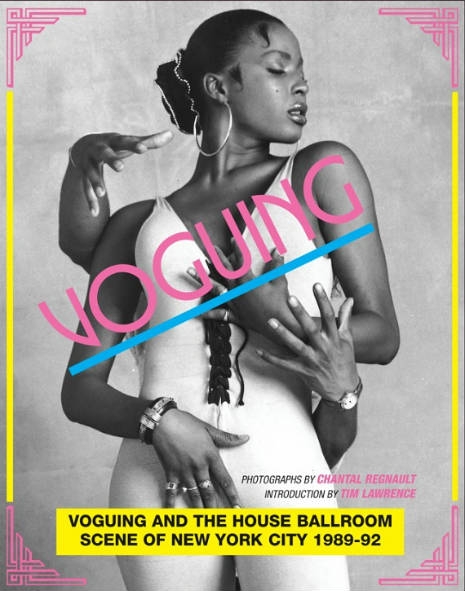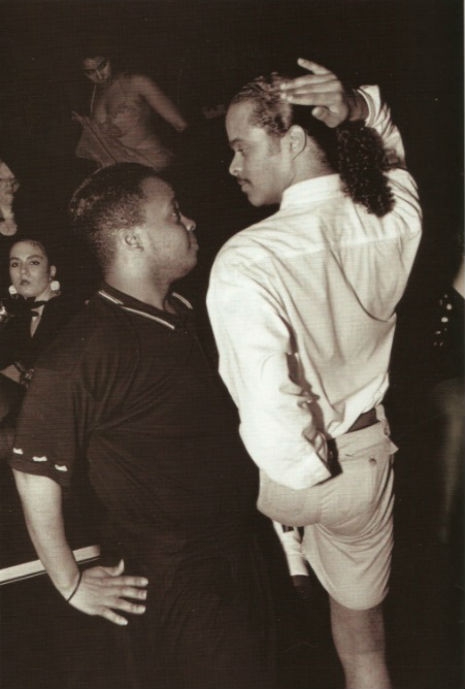
As you may know, voguing is one of my major obsessions. I put together this hefty piece of writing on the modern vogue/ballroom scene for Boing Boing back in March: Welcome to the Ballroom, where Voguing is always in style.
Inspired by interviews I gathered in my research for that piece, and my general love of watching videos clips of the dancing, sharing audio of the best music, and generally just watching geeky interviews, I have started a new blog dedicated to vogue and ballroom culture in its many forms. It’s called CVNTY and you can find it here: http://c-v-n-t-y.tumblr.com/
While Paris Is Burning is one of my favourite movies ever, for many, it seems to have frozen vogue culture in a late 80s/early 90s time warp, something that is easier to digest as a retro scene. Of course, the era depicted in that film WAS a golden age, but voguing is a hugely vibrant culture right now, and I aim to show both the past AND the present, and maybe even a little bit of the future, if I’m lucky. There are already exclusive interviews up on CVNTY with kingpins of the modern ballroom sound MikeQ and Vjuan Allure, along with many others I interviewed for Boing Boing but whose contributions didn’t get used, as well as cross posts to pieces I have written for other sites such as Red Bull Music Academy and Dalston Superstore. I will keep the remit of this blog to dance music artists whose work touches on issues of queerness/race/class/otherness, although there will always be room for posting music, people and things that just fucking fabulous. Needless to say, my own production and dj work as CVNT will pop up from time to time.
To lure you in, dear DM reader, here’s a rare voguing clip I’ve just posted on CVNTY, and am sharing here too, as it deserves much more than the paltry 24,000 views it currently has.
It’s called Voguing: The Message, and it is from 1989, which means it pre-dates both Paris Is Burning and Madonna’s vogue daliance. It takes a look at the emerging vogue ball scene and the pier children who attended these events, and features interview and performance footage of the legendary Willi Ninja (above.) Founder of the House of Ninja, Willi was unarguably one of the greatest voguers of all time, and hugely responsible for voguing travelling beyond the clubs and being taken seriously as a n art form. This film possibly even pre-dates Ninja’s own starring role in the video for Malcolm McLaren’s “Deep In Vogue”, one of my favourite pieces of dancing ever caught on film. More info:
Voguing: The Message traces the roots of this gay, Black and Latino dance form, which appropriates and plays with poses and images from mainstream fashion. Voguing competitions parody fashion shows and rate the contestants on the basis of movement, appearance and costume. This tape is a pre-Madonna primer that raises questions about race, sex and subcultural style.
Dir. Jack Walworth, David Bronstein & Dorothy Low 1989 13 min. USA
Founded in 1977, Frameline is the nation’s only nonprofit organization solely dedicated to the funding, exhibition, distribution and promotion of lesbian, gay, bisexual and transgender media arts. Frameline Voices is a new digital initiative that showcases diverse LGBT stories and expands access to films by and about people of color, transgender people, youth, and elders.
Voguing: The Message is that rare thing, an important historical document that gives insight into a time, a place, and a set of people. In other words it’s that thing we call GOLD DUST.
You can find more like this (and subscribe!) over on CVNTY, but for now GET INTO IT:
Previously on Dangerous Minds:
Notes from the Niallist: That’s so CVNT, a ‘future-house’ voguing mix
Notes from the Niallist: A celebration of ‘Paris Is Burning’ with Latrice Royale and Peaches Christ
Dream Queens: ‘Voguing and the House Ballroom scene of NYC 1989-1992










